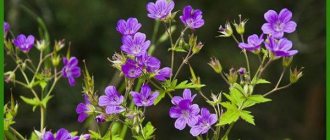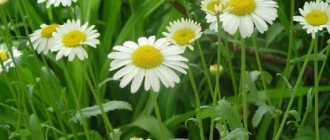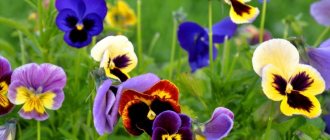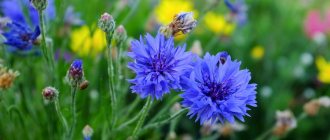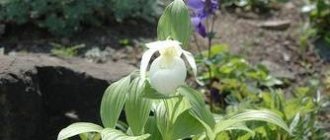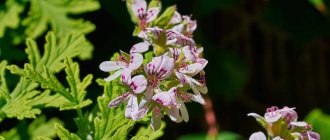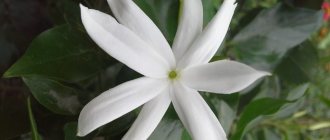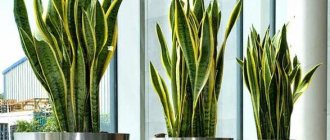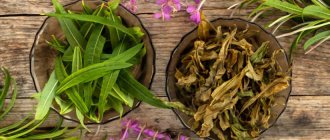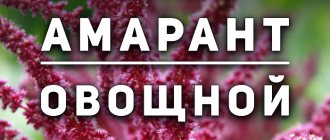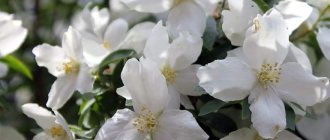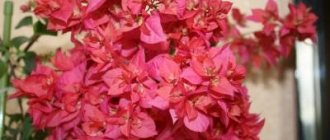Hibiscus for digestion
Hibiscus fruit acids act as a laxative.
This tea is recommended for people suffering from constipation. Hibiscus against Cancer
Hibiscus is rich in polyphenols, which have been shown to have powerful anti-cancer properties.
There are also studies that anthocyanins contained in hibiscus flowers can have antitumor properties. Hibiscus tea for urinary tract infections
Thanks to its diuretic effect and the content of organic acids that have antiseptic properties, hibiscus tea is considered a good helper during the treatment of cystitis (the effect is similar to that of cranberry).
Hibiscus for immunity
Hibiscus tea contains vitamin C, a strong antioxidant that we know has a positive effect on strengthening our immunity.
The presence of iron and minerals in the drink also helps maintain the balance of the immune system. Hibiscus for Colds A
test-tube study found that rosella extract fights eight strains of bacteria and is as effective as some medications used to treat bacterial infections. In addition, hibiscus has a softening and protective effect on the internal tissues of our body, performing an anti-inflammatory function on the mucous membranes. This makes it useful for gingivitis, sore throat and colds.
Who is the hibiscus decoction recommended for?
Hibiscus will be useful in the following cases:
- with high blood pressure;
- to replenish antioxidant levels and rejuvenate;
- when did the first signs of a cold appear?
- if you need to lower your temperature without taking pills;
- to normalize the menstrual cycle;
- in the treatment of various infections;
- as a prevention of oncology;
- if you want to get rid of toxins;
- to reduce bad cholesterol levels;
- if there are problems with stool (constipation);
- for the treatment and prevention of helminthiasis;
- for weight loss purposes.
Harm of hibiscus
Rosella flowers have a number of contraindications, which you should definitely familiarize yourself with if you plan to regularly brew hibiscus.
- Hibiscus tea may affect estrogen levels—both pregnancy and fertility. If you are trying to get pregnant or are already pregnant, you may want to avoid or reduce the amount of hibiscus in your diet.
- Hibiscus lowers blood pressure, so it can be harmful to hypotensive patients.
- The acidic properties of hibiscus will definitely not benefit people suffering from gastritis with high acidity or peptic ulcers. If you have gastrointestinal diseases, it is best to consult your doctor.
- It is not recommended to drink hibiscus tea for people with urolithiasis.
- With great caution, undiluted hibiscus should be given to children under 3 years of age.
- Not recommended for people with poor tooth enamel.
- Also, in rare cases, hibiscus can cause allergies.
In folk medicine, it is believed that hot (not chilled) hibiscus tea can raise blood pressure for a short period of time, which makes it supposedly dangerous for hypertensive patients. However, scientific studies of hibiscus have shown that it does not contain any components (caffeine, tannins or other substances) that could affect the increase in blood pressure. The pressure in this case increases due to the temperature of the drink and/or the addition of sugar, but not due to the properties of the hibiscus itself.
Possible diseases and pests, ways to get rid of them
Hibiscus is a plant, photos and reports about which confirm its high resistance to infections. Garden and house flowers practically do not get sick. Only with too much watering and lack of drainage can root rot develop.
Among the pests, hibiscus can be bothered by aphids or spider mites. It is better to immediately spray garden bushes with special insecticides. At home, they try to remove pests manually using a swab moistened with soapy water. Chemical treatment is used as a last resort.
Which hibiscus is better to buy?
As a drink base, hibiscus can be available in different forms:
- dry flower petals for brewing;
- tea bags;
- liquid extract;
- encapsulated powder;
- ready-to-drink liquid tea in bottles.
In Russian stores you can most often find the first two types. In this case, it is better to give preference to whole petals, which are the most versatile and safe product in terms of contraindications. In terms of price, it is better to focus on the middle segment - this will allow you to avoid unnecessary expenses and at the same time not be mistaken with quality.
As for the appearance of the petals, choose the most solid, non-crumbling flowers of a bright burgundy color.
A little bit of information
Hibiscus is placed before mallow. This family is characterized by rich colors and very bright, aromatic fruits. Hibiscus is a plant that is quite inflexible and watery. You can create it absolutely easily in your own home. The growth of wines in rich countries. Egypt is highly respected by Fatherlandism. Ale hibiscus is also found in China, Mexico, Thailand, Java and Ceylon. So it can be confirmed that growth is international. Moreover, in the light of the skin, hibiscus has its own name:
- In African countries it is called Sudanese tea
in Jamaica - red sorrel or roselle
in Mexico - flor de Jamaica
Hibiscus has more than 150 varieties and grows in different forms: it looks like a bush or a tall tree. Hibiscus Sabdariffa is used to prepare tea. The first clues about hibiscus tea can be found back in 1576, in the works of Mattias de L Obel, a botanist who documented the drink of his drinker.
Sudanese Troyanda is a plant that is not only more aromatic and tasty, but also even more brown. The quantity of nuts, vitamins, microelements and organic acids is great. Drinking, in which there is a presence of hibiscus, the water has a pleasant sour flavor and aroma, which suggests that it has quite a large amount of citric acid.
Vzagali hibiscus is the name that the roots go to Africa. It is also called red sorrel, Sudanese rose or Venice mallow. Varto means that not everyone shares the love of the Egyptians and other peoples of Africa with hibiscus. Actions should be placed very negatively until tea, when you would like a small amount of present hibiscus. And meanwhile, the right prices for refined relish and healthy food mean not only its monster power, but also the dazzling effect that can be achieved by regularly eating it.
Hibiscus is a delicious product that helps us preserve health, youth and energy. The wine is absolutely natural, so in order to make it virulent, it is not at all obligatory to put on goodness. Even if there are one hundred and fifty species of this plant, it is absolutely possible to grow in different parts of the world, only the climate is due to the warm tropical one. Hibiscus, which grows in Egypt, is most respected.
How to brew hibiscus tea correctly?
Let's tell you a secret: in fact, there are no mandatory rules regarding the preparation of hibiscus. Hibiscus flowers can be boiled, brewed, infused in cold water, diluted with juices and other types of tea, topped with ice or diluted with boiling water - whatever you want, as long as it tastes good to you. Hibiscus is wonderful precisely because it opens up wide scope for culinary experiments, and we are happy to share the most accessible and interesting recipes. You can take them unchanged or try to get creative, starting from the existing base.
The value of the plant for cosmetology
Egyptian legend says that the Saudi rose was called the “flower of the pharaohs.” Cleopatra not only consumed hibiscus in the form of tea, but also took baths with a tincture from the plant. Therefore, her skin acquired a copper tint that could not be achieved by any other means.
Modern girls use hibiscus in the following cases:
- For skin problems. You need to use the soaked petals of the plant as masks.
- Tea leaves help you get rid of bags under your eyes.
- A paste of petals removes excess oil from hair.
Hot brew (winter recipe)
There is nothing better than warming up with a good cup of hot tea during the cold season. Hot brewing is the easiest way to enjoy hibiscus tea, and you can prepare it just like you would any other regular tea. Remember, however, that hibiscus can only withstand one brew.
Recipe
Boil water (150–200 ml) and pour in 2 tsp. dried hibiscus petals in your teapot, cover and wait. Depending on how strong you like your infusion, let the tea steep for 2-3 to 10 minutes. When hibiscus is fully cooked, it acquires a thick, velvety texture and a dark, rich color. To prevent the drink from being too sour, add a little honey to taste. If you wish, you can dilute it with boiling water or drink it pure. If you want to preserve the maximum beneficial properties of hibiscus, brew the petals with water at a temperature no higher than 80 degrees.
Short description
Hibiscus sabdarifa, hibiscus and Sudanese rose are all names of the same plant.
Hibiscus petals are cup-shaped, fleshy, and dark red in color. After the bud withers, the petals greatly increase in size. The remaining parts of the plant are green, sometimes with a reddish tint. All of them are edible except the root.
The plant prefers hot climates. The higher the temperature, the more the plant stem stretches, and the flowers acquire a more saturated color. The rose bush can reach 6 meters in height.
Its root system is mixed, with primary and secondary taproots.
Cold brew (summer recipe)
This method is very popular in hot countries such as Sudan, Lebanon, Turkey, etc. Like all varieties of cold brew, cold brewing hibiscus involves infusing the petals for a long time. It can be served either neat or with ice. It is noteworthy that even a two-hour infusion allows you to extract almost the same amount of substances as standard brewing with boiling water, but ideally it is still better to let the drink sit overnight. The resulting tea will be much smoother and sweeter than usual, and you may not even need to supplement it with sweeteners.
Recipe
Take 4-5 tablespoons of whole dried rosella petals, rinse them and add one liter of clean, cool water to a jug. Place the jug in the refrigerator and let the drink steep for several hours. If you wish, you can add a cinnamon stick or other favorite spices to the petals. The finished infusion can be stored in the refrigerator for about a week.
Is it possible to grow roses at home?
A flower from tropical latitudes, where in winter the temperature rarely drops below 15 ° C.
Therefore, it can only be grown outdoors in the south, providing a reliable shelter. This plant is often grown as a houseplant. Feeding the seeds
It is believed that such a rose is much easier to grow from seeds. Firstly, this method takes less time, and secondly, flower seeds have good germination even after 5 years. The seeds are purchased in specialty stores, but they can also be found in tea bags.
Planting seeds in a greenhouse or in a pot occurs as follows:
- Before planting, it is advisable to disinfect the planting material. The seeds are soaked in a weak potassium permanganate substance for 30-60 minutes.
- After this time, the seeds are properly washed with running water. For germination (planting material is placed in fabric impregnated with the substance).
- After 3-4 weeks, young embryos appear; seeds with embryos are sown in separate pots. If the seedlings are planted in a greenhouse or in the soil, it is better to sow them in one container.
Rose is quite demanding on the composition of the soil. For it, it is better to choose a special earthy consistency, which is characterized by excellent drainage and fertility. The normal option is to buy ready-made soil. But you can also make your own soil. You need to take sand and add humus, peat and topsoil. It is recommended to add wood ash to fertilizers.
Cold Brew Express Method (7 Minute Recipe)
Proper cold brewing takes a long time. To prepare cold hibiscus, in which the aroma of tea is fully revealed, you need to let the drink brew for several hours (from evening to morning is ideal). But we don’t always have the opportunity to plan everything according to the rules. Therefore, we offer you an abbreviated and simplified version. If, after a walk on a very hot day, you urgently want a large glass of iced hibiscus tea, use this express method.
Recipe
Take 1/4 cup water, 2 teaspoons crushed dried hibiscus and plenty of ice.
Boil water, pour it over the hibiscus flowers and let them steep for at least 5 minutes. This time is usually sufficient for extraction to occur.
Remove the petals (filter the infusion) and add 1-2 tablespoons of honey or sugar. Only then add ice to the glass. Place the first few pieces at once, and the subsequent ones will allow the drink to cool to the desired degree.
Important: if you add sugar to already cooled water, it will not dissolve.
Interesting Facts
The veneration and use of the Sudanese rose in so many countries leads to a large number of interesting facts about this plant:
- For residents of Egypt, hibiscus is a national treasure. It is much more popular than coffee in this country;
- In fact, the drink made from Sudanese rose is not tea at all, but a decoction or infusion;
- Hibiscus feels good indoors, so you can grow it yourself;
- The petals used after brewing can be eaten or used as fertilizer. But you won’t be able to brew them twice;
- Another name for the Sudanese rose is “Mallow of Venice.” There are 150 species of this plant;
- In addition to tea, jelly, jam, and cakes are prepared from the plant. Young shoots can be eaten as vegetables;
- Flower petals have been discovered in the burials of pharaohs;
- The flower in the hair of Hawaiian girls is hibiscus. It is a symbol of beautiful women and the national symbol of Malaysia;
- The plant was first mentioned in documents in 1596;
- When in contact with metal utensils, red hibiscus takes on a greenish tint and then turns brown;
- During intense physical activity, athletes are recommended to drink the drink along with a pinch of salt;
- It is best to combine hibiscus with rosehip decoction, although on store shelves you can also find pieces of orange and jasmine petals;
- Fresh petals can be added to salads. In some countries they are stewed with onions;
- In Burma, the flower is considered an aphrodisiac;
- The root of the plant is roasted and peeled by the Filipinos, and then used as an appetite enhancer;
- In Guinea, the seeds and leaves are used as a sedative;
- India uses hibiscus to make curries and puddings;
- The juice from the leaves is used to heal wounds in Angola;
- Hibiscus is a natural dye; it can be used to dye Easter eggs and fabric;
- There are so many varieties of hibiscus that among them there are flowers of almost every color of the rainbow.
https://youtube.com/watch?v=4qGlCLMfDqE
If this delicate flower has conquered so many countries and cultures, we would be foolish to refuse it. It has so many wonderful qualities that the body will thank you for such a gift for a long time.
All that is important is a sense of proportion and an understanding that hibiscus is not a panacea, but only a small and pleasant aid to health
Sudanese rose, Hibiscus, Hibiscus - the names of teas that have conquered the whole world with their unique taste. The flower grows in Egypt, Malaysia, Sudan. Locals love the drink made from Sudanese rose petals.
But is it only the taste and smell of tea that attracts the attention of the whole world? The beneficial properties of the plant are legendary. What's special about it?
Preparing a decoction for a cold drink (summer recipe)
This method of preparing hibiscus is also recommended for the hot season. It involves intensive cooking, but then the drink must be cooled and served with ice.
Recipe
Place dried hibiscus flowers in a saucepan and rinse them, then add water in a ratio of 1 cup to 1 tbsp. l. colors. Place the pan on the fire and bring the water to a boil. Let the broth simmer for 5-7 minutes over high heat, then add sugar to taste and reduce the heat to low so that your hibiscus cooks slowly for another 30-40 minutes. Stir occasionally. After the drink has brewed, let it cool and then strain it three times to make it as clear as possible.
In cooking
Do not rush to throw away the leaves left after cooking. They can be valuable and useful. As an example, let’s add a flower to a salad—carrot. It is used as a spice for cooking meat and fish dishes, and also gives the first dish a special taste.
Making rose jam. Everything is very easy.
Jam recipe:
- Soak the petals in cold water for 3 hours. Divide a liter of water into three parts. When the petals soften, add sugar.
- Take one and a half kilograms of sugar per kilogram of mass (Hibiscus is sour, remember? That’s why we take more sugar.).
- Boil the jam for 40 minutes - it turns out transparent, unusually aromatic and rich.
- Keep in mind that the petals, even if cooked for a long time, will remain hard. If you don’t like it, pass the jam through a sieve and a tasty jelly will come out.
Preparing a decoction for a cold drink (winter recipe)
If the temperature outside your window is sub-zero or it’s just gloomy and raining, a recipe for a warm hibiscus decoction will be more relevant. It is very similar to the previous one, but the finished drink is drunk immediately, without cooling.
Recipe
Place dried hibiscus flowers in a saucepan and rinse them, then add water in a ratio of 1 cup to 1 tbsp. l. colors. Place the pan on the fire and bring the water to a boil. Let the broth simmer for 5-7 minutes over high heat, then add sugar to taste and reduce the heat to low so that your hibiscus cooks slowly for another 30-40 minutes. Stir occasionally. After the drink has been brewed, you can drink it neat or dilute it with hot water, like classic black tea in Russian tea drinking.
Rules of care
The conditions for keeping the plant should be close to tropical . Caring for hibiscus includes the following points:
Water abundantly in spring and summer, moderately in winter, do not overwater to prevent rotting of the roots.- The temperature should be without sharp fluctuations, in winter not lower than +12 degrees. With a sharp change in temperature, the flower sheds buds, flowers and even foliage. The plant should not be exposed to drafts or direct sunlight.
- Spray the leaves, especially if the air in the room is too dry and warm.
- Loosen the top layer of soil.
- During growth and flowering, feed with organic and mineral fertilizers.
- Until 5-6 years of age, transplant into a new pot every year.
Transplantation should be carried out in early spring into soil consisting of clay-turf, leaf and humus parts in a ratio of 2:1:1, to which it is good to add a little sand and bird droppings. When transplanting, some of the roots are cut off, which promotes the growth of young shoots.
We invite you to watch a video with tips on caring for Sudanese roses:
Propagation and collection of seeds
Mallow is propagated in two ways: cuttings and seeds.
Cuttings help to guarantee the preservation of the qualities of the mother plant, which is impossible with the seed method of propagating hybrids. In this case, the doubleness of flowers is especially often lost.
- Cuttings are obtained by cutting the stem into pieces 10-12 cm long. The work must be done with a sterile instrument, and the sections themselves are treated with an antifungal drug.
- The cuttings are rooted in a greenhouse, ventilating the plantings daily. The soil is moistened with small portions of water, avoiding waterlogging. The appearance of new shoots will indicate successful rooting.
Seeds are harvested when at least part of the seed pods turns brown.
- The peduncle is cut off and placed indoors for storage so that the remaining boxes also ripen.
- You can collect seed material gradually, cutting off only darkened and yellow boxes from the stems. Collect seeds from the strongest and healthiest plants.
After full ripening, the boxes begin to open. The collected seeds are dried (but not in the sun) and stored at room temperature in paper envelopes or fabric bags. When properly stored, mallow seed material remains viable for up to 3 years.
On a note! If several varieties of hollyhocks grow on a site at once, they can easily cross-pollinate with each other. To ensure that the varietal properties are preserved, propagate mallow from cuttings.
The Legend of Rosella
People tell such a beautiful tale about how this plant came about.
A girl was born into the same family. Parents could not come to a common opinion about her name. The mother wanted to name her Sabdariffa, and the father called his daughter with the proud name Hibiscus. That's what they called her - each in their own way.
The girl grew up to be amazingly beautiful. The neighbors loved her and compared her to a rose. And so another name stuck to her - Rosella.
The older the girl became, the more surprise she caused. It turned out that the beauty can cure all sorts of diseases in people.
And outside the village lived an old healer. She lived by causing damage to everyone, and then removing it. She took a lot of money from the unfortunate people for her skills. But Rosella-Hibiscus-Sabdariffa easily coped with all ailments, even the witch’s damage was beyond her. And Rosella did not take anything from people for her services; she treated them for nothing.
The witch got angry at the kind girl because she was stopping her from fooling the people, and she bewitched her, turning her into a plant. Only here the girl turned out to be stronger than the witch. The plant bloomed with bright fragrant flowers! And people began to treat their illnesses with the help of this plant.
